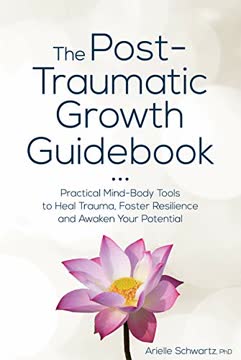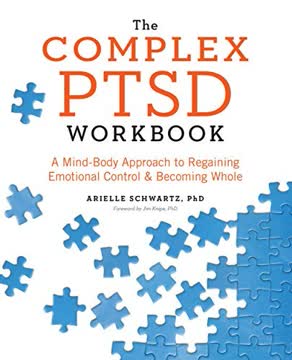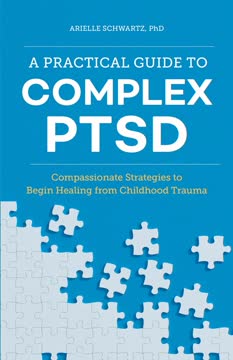Key Takeaways
1. Embrace Your Hero's Journey for Post-Traumatic Growth
Turning the deep scars of trauma into “post-traumatic growth” is indeed a hero’s journey.
Trauma's invitation. Traumatic events, regardless of their source—be it violence, loss, abuse, or natural disaster—can leave individuals feeling powerless and disoriented. However, these profound challenges also serve as an invitation to embark on a "hero's journey," a transformative path where deep scars can lead to profound growth. This journey is not about denying pain but about confronting it to uncover inner strength and wisdom.
Stages of healing. Healing from trauma typically unfolds in three stages, a non-linear process that requires patience and self-compassion. The initial stage focuses on developing resources to manage overwhelming emotions and memories, re-establishing a sense of safety and stability. The second stage involves actively processing the traumatic event's emotional, sensory, and cognitive impacts to lessen its hold. Finally, the third stage centers on creating a new sense of self, one not defined by trauma, and reconnecting with life's meaning and purpose.
Neurobiology of transformation. The brain possesses remarkable neuroplasticity, meaning it can change and rewire itself throughout life. Trauma often impairs how memories are stored, isolating them from positive experiences. Through practices like EMDR therapy, these maladaptive neural networks can be reprocessed and integrated, allowing individuals to build bridges between past pain and present resources. This process, guided by the "6 Rs" (Relating, Resourcing, Reprocessing, Repatterning, Reflecting, Resilience), empowers individuals to actively participate in their brain's healing.
2. Cultivate Resilience Through Mind-Body Connection
Resilience is not a trait that you either have or do not have; rather, it is a set of strategies that can be learned and practiced.
Resilience is learned. Resilience is the ability to adapt flexibly to challenging life events, a skill set that can be cultivated, not an inherent trait. It involves realistic optimism—acknowledging difficulties while maintaining a positive outlook—and focusing on behaviors that support physical, mental, emotional, social, and spiritual well-being. This proactive approach empowers individuals to take charge of their healing journey, believing their choices make a difference.
Nervous system regulation. The autonomic nervous system, with its three hierarchical parts (dorsal vagal, sympathetic, ventral vagal), dictates our responses to perceived safety and threat. Unresolved trauma disrupts this balance, leading to chronic "fight or flight" (anxiety, hyperarousal) or "shut down" (fatigue, depression). Mind-body practices help consciously influence this system, moving from primitive defensive states to the ventral vagal system, which fosters connection and calm.
Conscious influence. By understanding the body's innate physiological resilience, individuals can learn to regulate their nervous system. Tools like slow, deep breathing can immediately alter the balance between sympathetic and parasympathetic functions, increasing heart rate variability and building flexibility. This conscious engagement with the body's responses helps to override faulty stress reactions, fostering a sense of safety and control in the present moment.
3. Build a Foundation of Safety and Resources
Our injuries do not occur in a vacuum, so our healing cannot occur in one either.
Support is paramount. Healing from trauma is a journey that cannot be undertaken alone; it requires compassionate support and intelligent guidance. Resources, both internal and external, are crucial for re-establishing a sense of safety and stability. These include:
- External allies: Trusted friends, spiritual mentors, or therapists.
- Safe places: Imagined or real environments that evoke calm.
- Containment strategies: Consciously putting away painful memories until ready to process.
Reclaiming protection. Many individuals develop defensive mechanisms to survive trauma, such as building emotional walls or pushing people away. While these served a purpose, they can hinder current relationships and well-being. Reclaiming a healthy inner protector involves recognizing these old defenses and consciously choosing to let go of those that no longer serve. This allows for vulnerability, which is a true strength, and the ability to assert needs without fear.
Slow and steady progress. Trauma recovery is not a race; it demands a slow and steady approach to build trust in oneself and the healing process. By gradually accumulating resources, individuals can expand their capacity to tolerate discomfort and engage with deeper healing work. This foundational stage ensures that when confronting painful memories, there is sufficient support to navigate the experience without becoming overwhelmed.
4. Process Trauma by Riding Emotional Waves
All experiences are meant to come and go, like waves in the ocean.
Emotions as energy. Emotions are "energy in motion," meant to surge, be fully felt, and then subside, much like ocean waves. However, trauma often leads to blocking these emotional waves, resulting in rigidity, numbness, or fear of being overwhelmed. Healing involves learning to "surf in the shallows" first, gradually building tolerance for discomfort by addressing smaller stresses before tackling more significant traumas.
Window of tolerance. Daniel Siegel's "window of tolerance" describes an optimal zone of arousal where individuals can effectively respond to emotional and physical needs. Trauma healing aims to widen this window, increasing the capacity to accommodate a greater range of arousal states—from hyperarousal (anxiety, jitteriness) to hypoarousal (depression, lethargy). This involves meeting all experiences with equanimity and self-compassion, recognizing that both expansion and contraction are natural rhythms.
Titration and pendulation. To avoid re-traumatization, trauma processing employs techniques like titration and pendulation. Titration involves addressing distressing memories in small, manageable "drops" to slowly discharge tension. Pendulation alternates attention between a distressing memory and a positive, grounding resource in the present moment. This regulated approach allows individuals to confront trauma at a tolerable pace, building nervous system flexibility and reducing the risk of feeling flooded.
5. Transform Self-Sabotage into Self-Love
It is possible to increase awareness of these internal conflicts by creating a dialogue between these different parts of yourself, which allows each part of you to have a voice.
Internal conflicts. Self-sabotage often stems from internal conflicts between different "parts" of oneself—such as a vulnerable child part, a critical inner voice, or a part that pushes away emotions. These conflicts can lead to anxiety, resistance to healing, and an inability to sustain positive changes. Recognizing and giving voice to each part, treating them as honored guests, is crucial for resolution.
Dialogue with parts. Techniques like the "three chairs approach" facilitate a dialogue between these internal parts:
- Observer/Wise Self: Connects to inner wisdom and compassion.
- Criticized Part: Expresses feelings of judgment and hurt.
- Inner Critic: Reveals its fears and motivations (often a misguided attempt at protection).
This process helps to understand the needs of each part, fostering self-compassion and moving towards integration.
Turning toward shame. Shame, a profound wound of not belonging, often arises from past abuse, neglect, or rejection, leading to faulty beliefs of unworthiness. It can manifest as lashing out, isolating, or hiding one's true self. Healing shame involves gently turning towards these feelings, reaching for connection in small, safe ways, and validating one's legitimate human needs for acceptance and love. Self-compassion, treating oneself with the same kindness as a beloved friend, is vital in this process.
6. Unwind Trauma's Grip Through Somatic Repatterning
Simply put, your body keeps the score.
Body holds memories. The body is not merely a vessel for the mind; it actively holds memories of traumatic events, often as implicit or "body memories" that predate language. These can manifest as chronic tension, specific postures, or physical symptoms like freezing or collapsing in response to triggers. Trauma obstructs natural movement impulses, such as the desire to fight, flee, or reach for support, leaving these actions incomplete within the body.
Reclaiming movement. Healing involves increasing awareness of these habitual tension patterns and experimenting with small, conscious changes in breath, posture, and movement. Somatic repatterning encourages individuals to:
- Explore subtle movements that unwind tension.
- Follow natural movement impulses (e.g., kicking, reaching, making sounds).
- Allow spontaneous trembling or shaking, known as "sequencing," to discharge long-held traumatic activation.
This process helps the body complete defensive responses that were previously blocked, leading to a greater sense of freedom and resolution.
Trusting intuition. Reconnecting to the body's wisdom allows individuals to trust their instincts and intuition, which may have been suppressed due to trauma. By listening to the body's signals, individuals can differentiate between past threats and present safety, empowering them to respond more effectively to current situations. A somatically trained therapist can be instrumental in this process, offering compassionate reflection and guidance to integrate these embodied experiences.
7. Heal Transgenerational Wounds to Reclaim Your Future
Any story can either bind you or free you, depending on how it is told.
Inherited burdens. Unresolved trauma from previous generations can create a "transgenerational legacy," impacting subsequent generations through implicit memories, attachment patterns, and even physiological changes. This can manifest as unexplained emotional distress, physical symptoms, or repeating painful behavioral patterns, such as anxiety, control issues, or difficulty with intimacy. These invisible connections can hinder an individual's forward-focused energy.
Breaking the cycle. Illuminating ancestral roots and understanding family stories can provide crucial insight into current symptoms and barriers. Even without explicit details, the body may hold remnants of these past traumas. Healing involves:
- Grieving ancestral losses.
- Making amends for past transgressions.
- Releasing tension and limiting beliefs inherited from the past.
Through mindful embodiment practices, individuals can differentiate the present from the past, choosing to break the cycle of inherited trauma.
Crafting a new narrative. Recognizing a family legacy empowers individuals to choose how their story ends. By actively engaging with their personal narrative, they can let go of past burdens and imagine a future filled with new possibilities. This transformative act allows individuals to become the best possible version of themselves, supported by the imagined well-wishes of their ancestors, and to consciously shape the legacy they pass on to future generations.
8. Discover Meaning and Purpose from Suffering
The more difficult the challenge, the harder you will have to work to find your inner strength, courage, or sense of hope.
Meaning from adversity. Post-traumatic growth is fostered by actively interpreting and making meaning from life's challenges, transforming pain into possibility. This is not about believing "everything happens for a reason," but about committing to finding hope and purpose amidst despair. Trauma can be a catalyst for realizing newfound strengths, increased appreciation for life, and new spiritual perspectives.
Sources of meaning. Meaning can be derived from three primary sources, each connected to personal values:
- Creative values: Expressing oneself through art, music, writing, or constructive action.
- Experiential values: Finding inspiration in awe-inducing moments, nature, or deep human connection.
- Attitudinal values: Choosing one's response to unchangeable circumstances, exercising freedom in attitude.
Aligning daily life with these values helps to reduce the gap between one's actual and ideal life, fostering fulfillment and self-actualization.
Strengths-based living. Promoting wellness involves focusing on inherent capabilities rather than deficits. Identifying and leveraging character strengths—such as creativity, kindness, persistence, or hope—can organize one's life around a core sense of self. Engaging in daily actions that draw on these strengths creates a sense of flow and purpose, leading to a life that expresses one's passions and fulfills a deeper sense of meaning.
9. Balance Will and Surrender for Authentic Growth
Too much willful effort and you risk becoming aggressive toward yourself. Too much emphasis on surrender and you risk feeling passive or stagnant.
Will and surrender. Like two wings of a bird, will and surrender must be balanced for authentic growth. Willful effort drives aspirations and goals, while surrender involves trusting the process and accepting what cannot be controlled. This paradox allows for growth without aggression, fostering self-acceptance and enabling potential to unfold naturally. Setting intentions—articulating hopes and desires—plants seeds in the mind's garden, which then require nurturing and patience to bloom.
The power of rest. In a world of constant stimulation, prioritizing rest is crucial for nervous system balance and overall well-being. Just as a field needs to lie fallow to regain nutrients, individuals need periods of deep restoration to replenish resources. Restorative practices, such as meditation, gentle yoga, or simply taking a nap, help to:
- Reduce cortisol and alleviate stress.
- Enhance immune function and improve sleep.
- Nourish the endocrine and digestive systems.
Differentiating healthy relaxation from collapse or stagnation is key to embracing rest as a vital rhythm for sustained growth.
Creative expression. Art, in its myriad forms—music, writing, dance, painting—provides a powerful refuge and pathway for healing trauma. It connects individuals to their senses, helps them feel fully alive, and allows for authentic self-expression beyond words. Creative acts can serve as a guide for others, transforming personal suffering into shared understanding and hope. Approaching creativity with a spirit of play, without preconceived notions, allows meaning to emerge organically, fostering a unique connection between art and soul.
10. Self-Actualize by Giving Your Gifts to the World
Self-actualized individuals tend to be open-minded, creative, trustworthy, responsible, and value-driven.
Fulfilling potential. Self-actualization, as described by Abraham Maslow, is the process of becoming who you truly are, integrating past wounds into a coherent sense of self. It involves confronting fears, resolving anger, embracing self-worth, and clarifying future goals. This stage is about living honestly, wholeheartedly, and authentically, recognizing that self-actualization is a birthright and an ongoing journey, not a permanent state.
The return to community. The hero's journey culminates in a "return" to the world, where insights and wisdom gained from personal healing are shared to serve others. This involves drawing on one's own resilience to foster community strength, offering compassion for others' pain, and actively participating in creating a better world. Giving and receiving support, exemplified by loving-kindness meditation, highlights our deep interconnectedness and universal need for understanding and acceptance.
Forgiveness and connection. Forgiveness, an "inside job," reduces the burden of unresolved anger and hurt, freeing individuals from the need to retaliate. It's not about condoning harm but about reclaiming one's future. Healthy conflict resolution, guided by nonviolent communication, allows for differences and disagreements to deepen relationships rather than sever them. By taking responsibility for one's "emotional wake" and seeking feedback, individuals can consciously choose to leave a ripple effect of kindness, understanding, and positive change in the world.
Last updated:
Review Summary
The Post-Traumatic Growth Guidebook receives high praise from readers, with an average rating of 4.22/5. Reviewers appreciate its practical exercises, reflection opportunities, and guidance for reshaping thought patterns. Many find it helpful for personal growth and healing from trauma. Readers commend the book's non-judgmental approach, usability for both practitioners and individuals, and its effectiveness as a therapeutic tool. The book is described as encouraging, wise, and compassionate, offering tangible strategies for post-traumatic growth. Many reviewers express intentions to revisit and apply the book's concepts long-term.
Similar Books
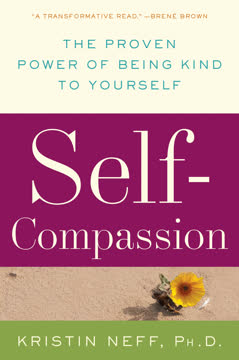
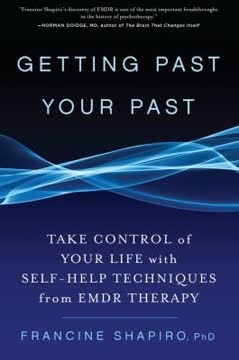
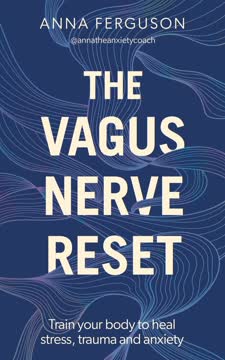
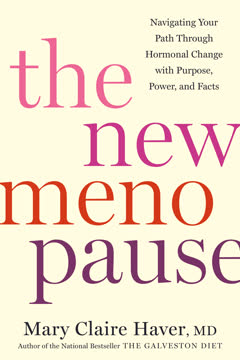
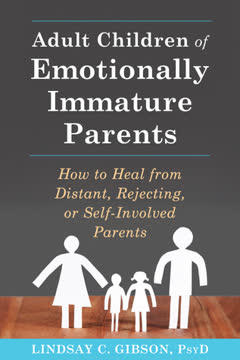
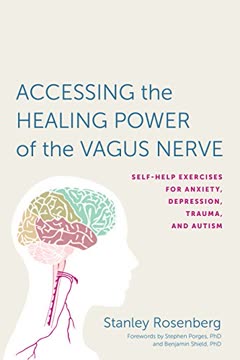

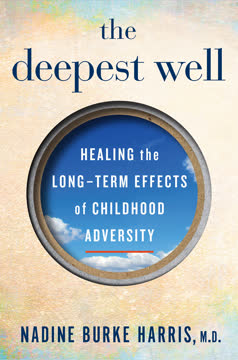
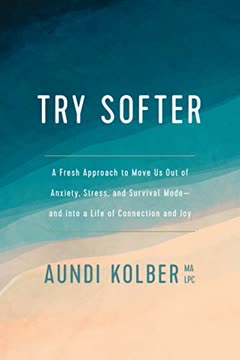
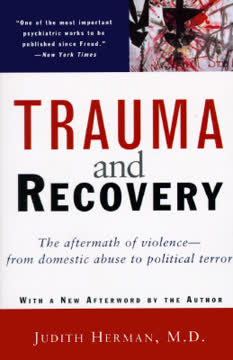
Download PDF
Download EPUB
.epub digital book format is ideal for reading ebooks on phones, tablets, and e-readers.
